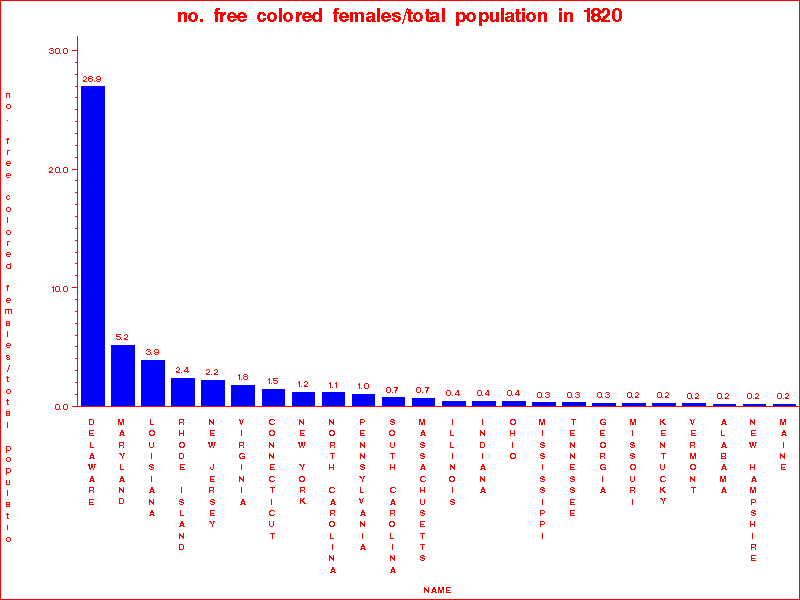
|
& |
From
it we also gain information about the demographic makeup of our nation.
In that sense it is a written record of the human growth of our country.
But it is a frustrating and incomplete record at best. Each year
the variables change making it difficult to follow one strand throughout
the almost 200 years of census taking.
The University of Virginia Library has recorded the raw data for every census from 1790 - 1960. Students are able to choose variables from each census year and see the results at the national, state and county level. The browser also allows students to figure ratios and draw graphs of the data they have gathered. For example. If students ask how many free blacks lived in New York in 1790, they would be given the figure of 4,682. If they chose the variables of total population and slaves, they would also find that of the 340,241 total population, there were 21,193 slaves. The browser also allows them to do basic calculations so that they can see what percentages of the total population each category represents.
A simple chart can show the relationships:
New York
|
|
|
|
|
|
|
|
|
|
|
|
|
|
|
|
|
|
If the students choose to run the same demographic on other years, some comparisons concerning population growth can be made.
New York
|
|
|
|
|
|
|
|
|
|
|
|
|
|
|
|
|
|
The site also allows for graphs to be made for comparisons.

Students can customize searches after viewing initial data and modify research questions as they gather data.
Their results can be added to the data base on African Americans being assembled by students across the nation.